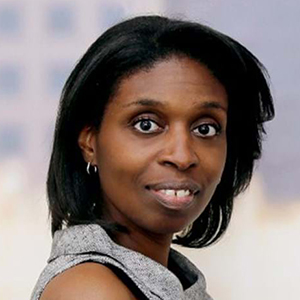

Year In Review: Five Lessons I’m Taking Into 2022
When 2021 began, I hoped we were entering a calmer and more peaceful time. After all, what could be more disruptive than a global pandemic and ongoing social protests? But just six days into the new year, we found out.
The brands I work with have been challenged by our fast-changing times. More than ever, they’re called on to speak and act on difficult societal issues, WE Communications reveals in our 2021 Brands in Motion reports: Rethinking the Purpose and Meaning of Leadership and The Bravery Mandate. As I look back on 2021, I see important lessons for how brands can navigate this new landscape.
STAY HUMBLE
We’re in a humbling moment. Social uncertainty and unrest have senior brand leaders feeling more introspective and more willing to examine their personal blind spots, WE reported this past spring.
In 2022, leaders need to keep that humility. They need to incorporate absolutely everyone’s perspective. The feedback you get won’t always be sunshine and roses, but if you can show you’re committed to making positive changes, you’ll be prepared to handle whatever 2022 brings.
PUT PEOPLE FIRST
At the height of the pandemic, many brands worked hard to ensure their people were safe and able to manage new stresses like home-schooling their children. Now the bar has been raised, and employees are more vocal about their needs—what they want for the future, and when they’re mentally and emotionally exhausted and need a break.
The question is, are you listening? Employees are the people driving an organization, and they’re carrying the same burden as you, or a heavier one. You don’t have to coddle them, but you do need them to know they’re your most important stakeholders—because they are.
LISTEN TO YOUR YOUNGER EMPLOYEES
Younger audiences can provide insights that will help you stay relevant in the decades ahead, so don’t count them out just because their experience is different from yours. Many executives grew up at a time when corporations didn’t comment on societal issues—companies whose only purpose was to make good cars or computers. But that’s not what younger consumers expect. Our Bravery Mandate report research finds that about 70% of Gen Z and millennials prefer to purchase and recommend brands that speak and act on societal issues that matter to them.
Of course, you don’t want to overindex. The CEO of a financial services firm probably shouldn’t make a TikTok. But she should be attuned to the media habits of her younger customers and employees.
DON’T SPEAK BEFORE YOU’RE READY
Many brands feel rushed to take certain stands before they’re ready, but they shouldn’t. Our new research finds that most people prefer brands make multiyear investments in single issues, rather than chase the cause-of-the-month. But they also expect frequent communication on topics of importance—the majority said at least once a week.
Before you speak, get clear on who you are and what you stand for—not just today but over the long term. The audience isn’t just watching your response in the moment, they will also be checking back in a year to see how well you delivered.
BUILD ON YOUR BRAVERY
Most brands want to be safe. They don’t want to offend their customers or alienate their employees. But today safe isn’t really an option. Brands not only face a fractured audience but also the fact that a third of consumers don’t want them speaking or acting on societal issues at all.
Bravery means jumping off the ledge but not without a parachute. You must be willing to be uncomfortable, make mistakes and accept that not everyone will jump with you. But you also need to be prepared—to examine your deepest fears and ask yourself the questions you don’t want to be asked. Then, when you do leap, it will be clear that you’re prepared to speak and act, and that you’re in it for the long haul.
The latest blogs from WE
Decoding Gen Alpha: A Primer on the Next Gen of Consumers
Why Gen Alpha Will Fuel Spending This Season
Why Reputation Is a Business Driver in Healthcare


